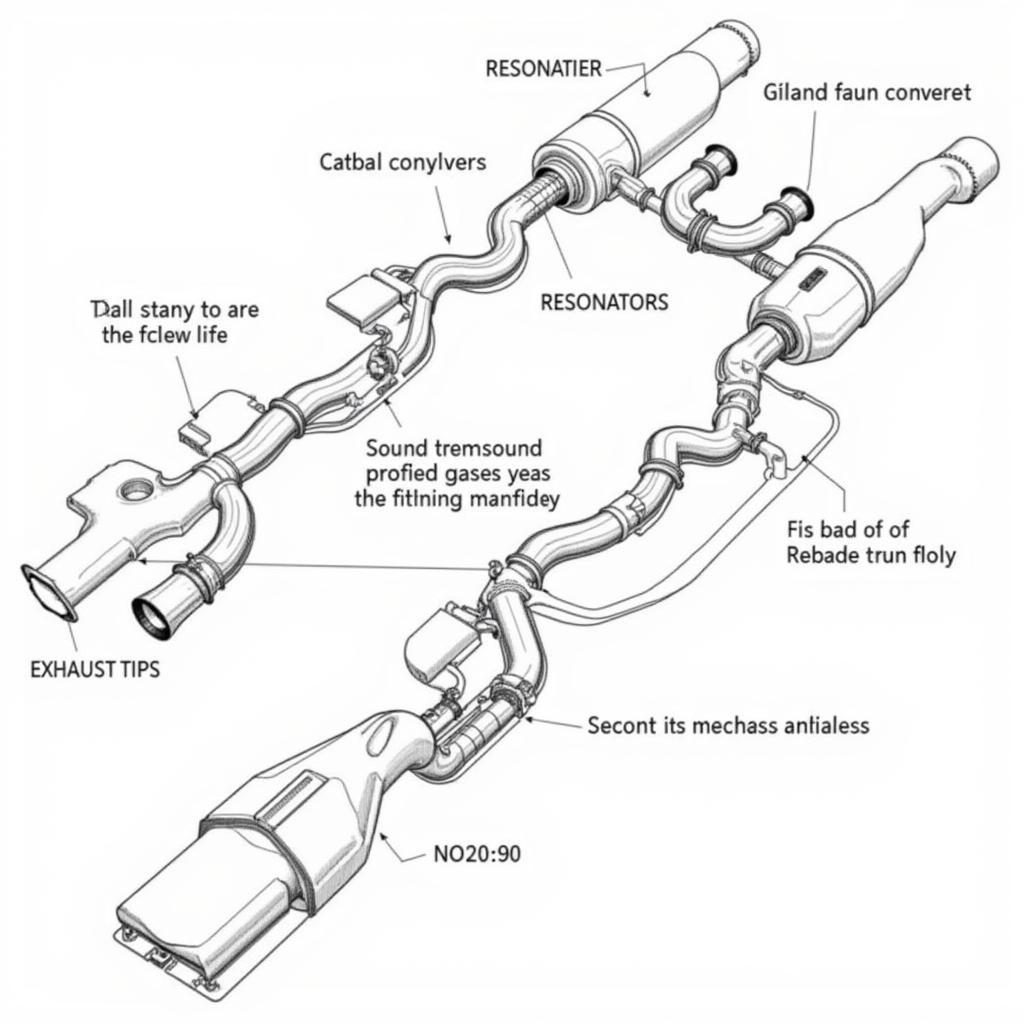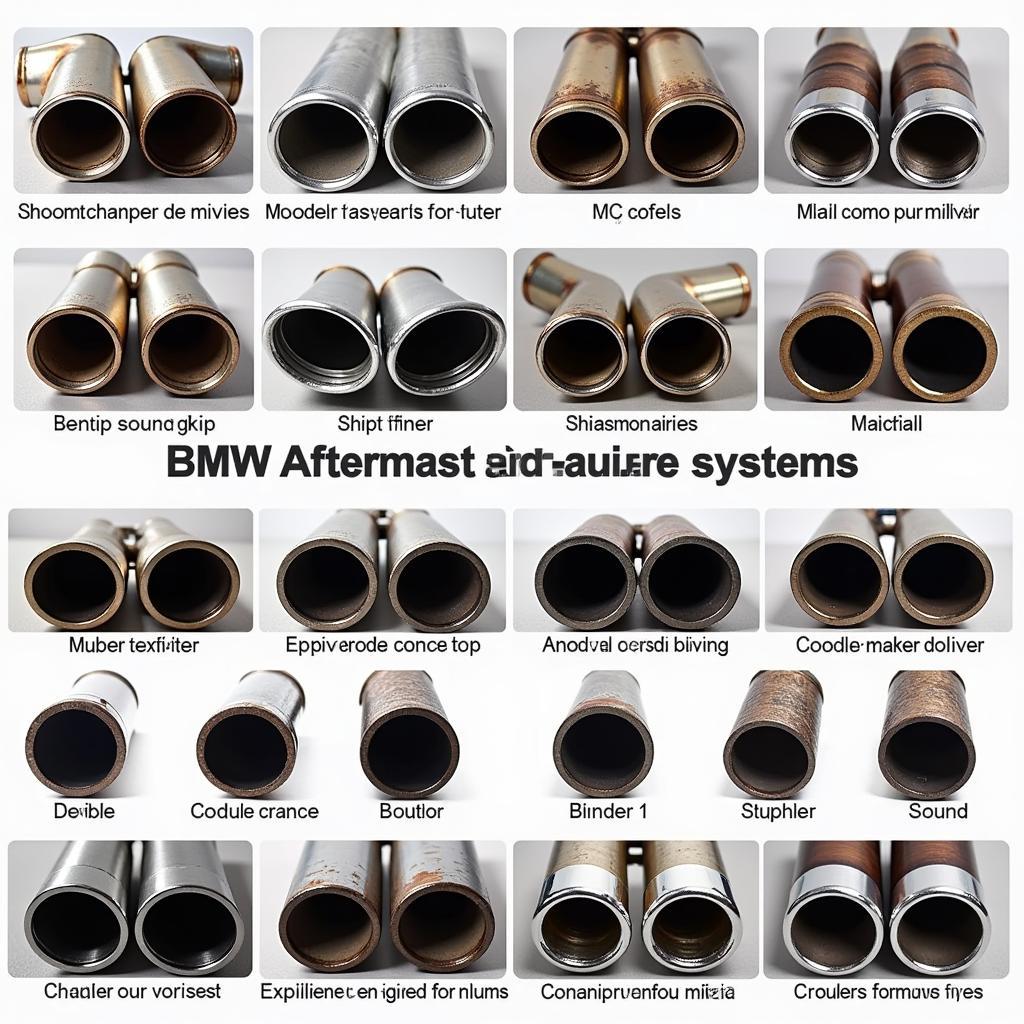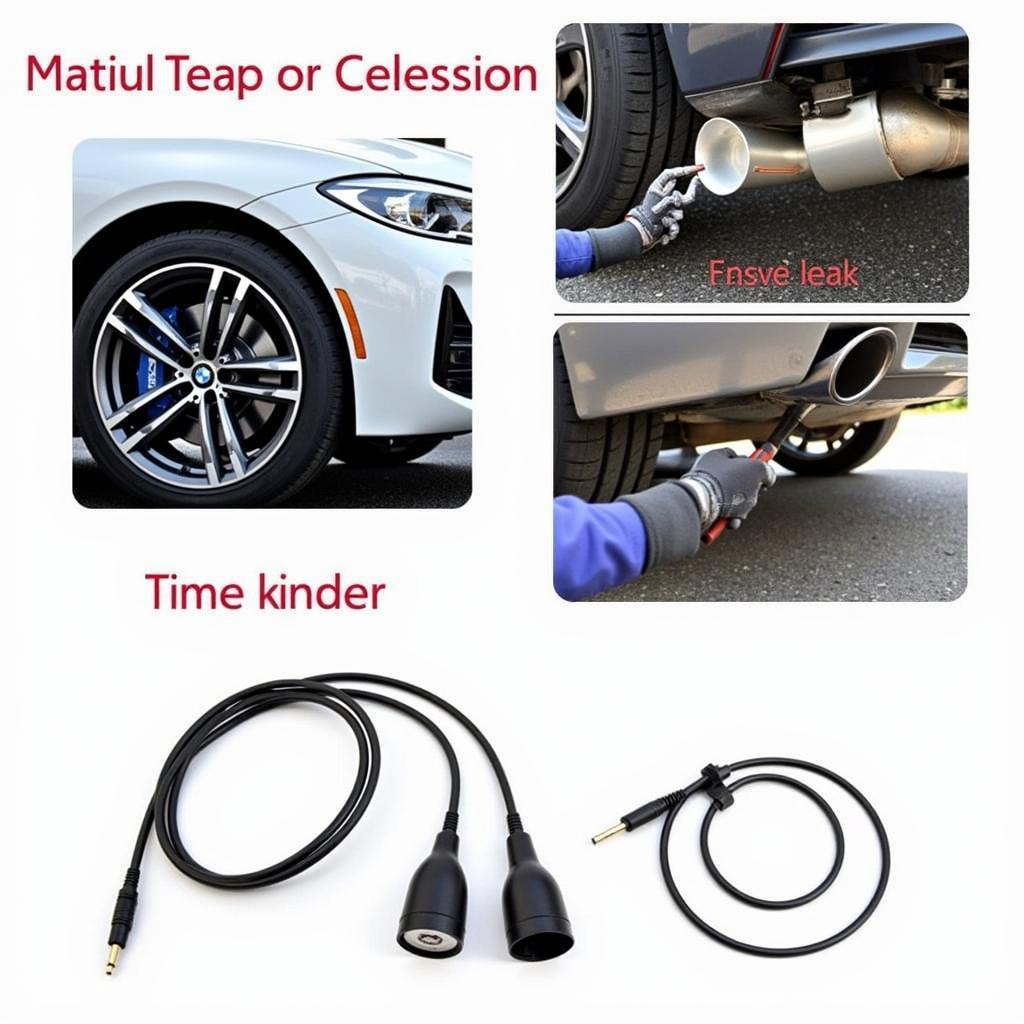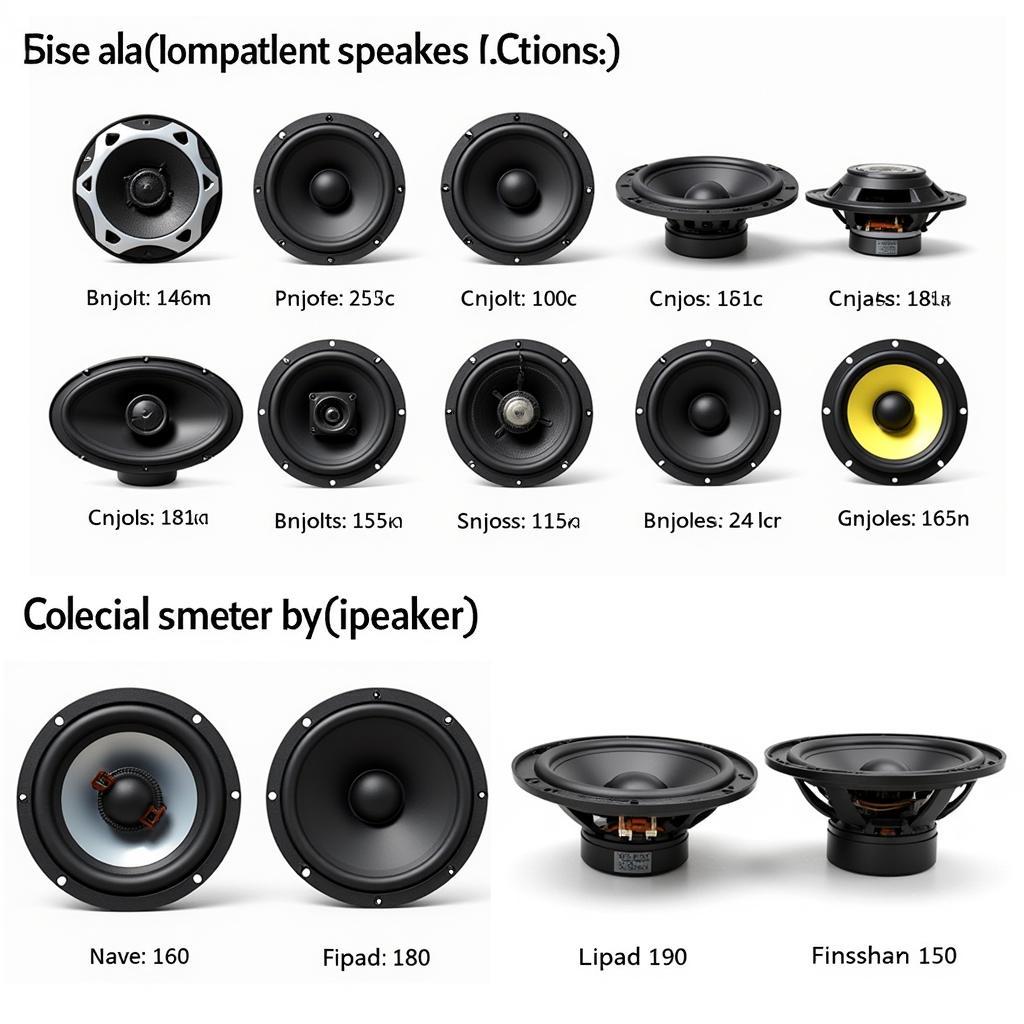The growl, the rumble, the roar – the BMW M exhaust sound is more than just noise; it’s a symphony of performance, a declaration of power. Whether you’re a seasoned BMW M owner, a mechanic looking to enhance a client’s driving experience, or simply an enthusiast captivated by the iconic sound, understanding the nuances of the BMW M exhaust system is key.
The Science Behind the Roar: How BMW M Exhausts Work
The distinctive BMW M exhaust sound is a carefully engineered result of several factors. From the engine’s firing order to the design of the exhaust manifolds, every component plays a role. The exhaust system is meticulously tuned to not only manage exhaust gases efficiently but also to create a specific acoustic signature. This involves careful consideration of back pressure, resonator design, and muffler construction. The goal is to achieve a balance between performance enhancement and a sound that is both exhilarating and refined.
 BMW M Exhaust System Diagram
BMW M Exhaust System Diagram
The materials used in the construction of the exhaust system also contribute to the unique sound. High-grade stainless steel is often employed for its durability and resistance to corrosion, but it also affects the resonance and timbre of the exhaust note. Some M models even incorporate active exhaust systems with electronically controlled valves that can alter the sound profile depending on the driving mode.
Enhancing the BMW M Exhaust Sound: Options and Considerations
For those seeking to amplify or refine their BMW M’s exhaust note, several options are available. Aftermarket exhaust systems, from reputable brands like Akrapovič, offer various levels of sound enhancement and performance gains. These systems can replace the entire factory exhaust or specific components like the muffler or resonators. It’s crucial to select a system that is compatible with your specific M model and meets local regulations regarding noise emissions.
 BMW M Aftermarket Exhaust Options
BMW M Aftermarket Exhaust Options
You can explore the sound of the bmw m5 f90 exhaust sound for more detailed information. Modifying the exhaust system can impact the vehicle’s warranty, so it’s advisable to consult with a qualified BMW technician before making any changes.
Common Issues and Troubleshooting BMW M Exhaust Systems
Like any complex mechanical system, BMW M exhausts can experience issues. Common problems include exhaust leaks, which can manifest as a hissing or ticking sound, and damaged or corroded components. Regular inspections and maintenance are crucial for identifying and addressing these issues promptly. Diagnostic tools can pinpoint the source of leaks and other problems, enabling targeted repairs.
What are the common signs of an exhaust leak?
Common signs of an exhaust leak include a hissing or ticking sound, decreased fuel efficiency, and a noticeable smell of exhaust fumes inside the cabin.
Why is my BMW M exhaust making a rattling noise?
A rattling noise could indicate a loose or damaged component within the exhaust system, such as a heat shield or a broken hanger.
 BMW M Exhaust Leak Detection
BMW M Exhaust Leak Detection
For similar exhaust notes, consider researching the bmw akrapovic exhaust sound. Ignoring exhaust problems can lead to more significant issues, affecting performance and potentially causing damage to other vehicle systems.
The Future of BMW M Exhaust Sound: Innovation and Sustainability
As the automotive industry evolves, so too will the sound of performance. BMW continues to innovate, exploring new technologies to create exhaust systems that are both exhilarating and environmentally conscious. This includes advancements in active exhaust systems, allowing for greater control over sound profiles, and the development of lighter and more efficient materials. The future of the BMW M exhaust sound promises to be a harmonious blend of performance and sustainability. For a deeper dive into specific models, explore the sounds of the bmw x5 m sound exhaust or the classic 2013 bmw m6 exhaust sound. If you’re looking to enhance the sound of a different BMW model, check out how to make 2014 bmw 535 exhaust sound better.
Conclusion: The BMW M Exhaust – A Symphony of Power
The BMW M exhaust sound is an integral part of the M experience, a testament to engineering prowess and a symbol of driving passion. Whether you’re seeking to maintain the original sound or explore enhancement options, understanding the intricacies of this complex system is key. By appreciating the science, exploring the options, and addressing potential issues proactively, you can ensure that your BMW M continues to deliver the exhilarating auditory experience that defines the M legacy.
FAQ
-
What makes the BMW M exhaust sound so unique?
The unique sound is a product of careful engineering, from engine firing order to exhaust component design. -
Can I modify my BMW M exhaust sound?
Yes, aftermarket exhaust systems offer various sound enhancement options. -
Are there any risks associated with modifying the exhaust system?
Modifying the exhaust can void warranties; consult a BMW technician. -
How do I troubleshoot exhaust leaks?
Diagnostic tools and visual inspections can help pinpoint leak sources. -
What is the future of BMW M exhaust sounds?
BMW is exploring new technologies to balance exhilaration and environmental consciousness. -
How often should I inspect my BMW M exhaust system?
Regular inspections, at least once a year or as recommended by BMW, are essential. -
What are some common problems with BMW M exhaust systems?
Common problems include exhaust leaks, damaged components, and rattling noises.
Need help with your BMW M exhaust sound? Contact us via Whatsapp: +1 (641) 206-8880, Email: [email protected] or visit us at 276 Reock St, City of Orange, NJ 07050, United States. We offer 24/7 customer support.



